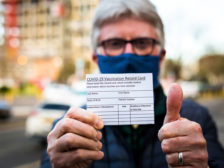Articles by Benita Mehta
Cover Story
Now that Pfizer vaccine has FDA approval, expect more companies to begin implementing workplace rules
September 1, 2021
Editorial Comments
Heat exposure has killed hundreds of U.S. workers — it’s time to do something about it
September 1, 2021
Editorial Comments
A sense of normalcy
With in-person shows returning this year, will you attend?
June 30, 2021
Editorial Comments
50 years of OSHA
Agency hits landmark amidst many changes, unprecedented times
May 13, 2021
Editorial Comments
CDC and OSHA recently updated workplace guidance related to Coronavirus
April 27, 2021
Never miss the latest news and trends driving the safety industry
eNewsletter | Website | eMagazine
JOIN TODAYCopyright ©2024. All Rights Reserved BNP Media.
Design, CMS, Hosting & Web Development :: ePublishing










